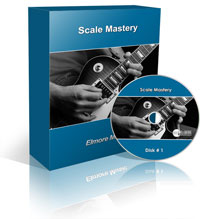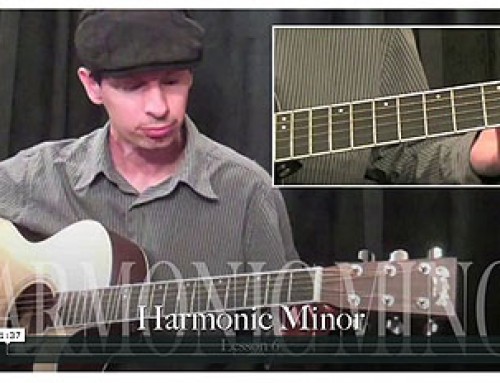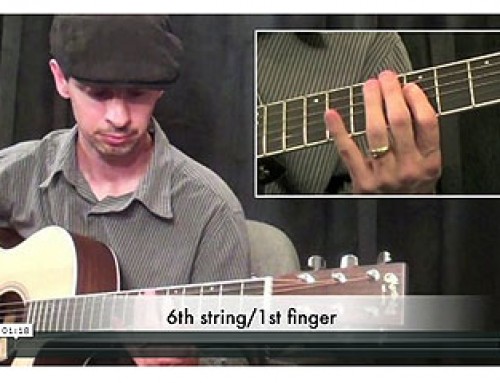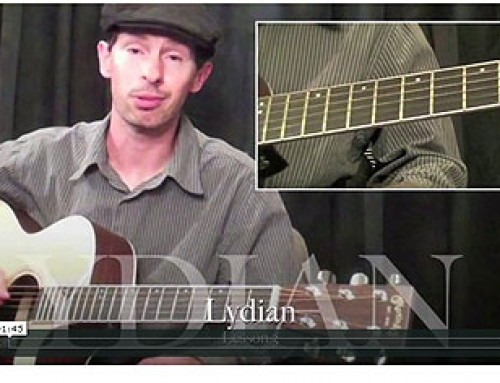The major scale can have many variations and one of the most popular is the Mixolydian mode or scale.
This is simply a major scale with a lowered 7th scale degree, which gives the scale a unique color.
The chord that the Mixolydian scale is closely associated with is the dominant colored chords i.e. dom7, dom9, dom13. It’s also used in many styles of music.
The whole/half step pattern for the Mixolydian scale is: W W H W W H W
Below you’ll find 6 patterns for the Mixolydian scale. Three are located on the 6th string and three are located on the 5th string.
These forms will allow you to visualize what notes work together in any given key across the entire range of the fingerboard.
Sixth String Forms
4th finger form:
E |-----------------------------------------1--2--4--| B |-------------------------------1--2--4------------| G |-------------------------1--3---------------------| D |---------------2--4--5----------------------------| A |-----2--4--5--------------------------------------| E |--5-----------------------------------------------|
2nd finger form:
E |------------------------------------------------5-| B |--------------------------------------5--7--8-----| G |----------------------------4--6--7---------------| D |------------------4--5--7-------------------------| A |--------4--5--7-----------------------------------| E |--5--7--------------------------------------------|
1st finger form:
E |----------------------------------------------------| B |------------------------------------------7--8--10--| G |--------------------------------6--7--9-------------| D |----------------------5--7--9-----------------------| A |------------5--7--9---------------------------------| E |--5--7--9-------------------------------------------|
Fifth String Forms
4th finger form:
E |-------------------------------------------9--10--12--| B |---------------------------------10--12---------------| G |--------------------9--11--12-------------------------| D |-------9--11--12--------------------------------------| A |--12--------------------------------------------------| E |------------------------------------------------------|
2nd finger form:
E |--------------------------------------------------------12--14--15--| B |-----------------------------------------12--14--15-----------------| G |--------------------------11--12--14--------------------------------| D |------------11--12--14----------------------------------------------| A |--12--14------------------------------------------------------------| E |--------------------------------------------------------------------|
1st finger form:
E |------------------------------------------------------------14--15--17--| B |---------------------------------------------14--15--17-----------------| G |------------------------------12--14--16--------------------------------| D |----------------12--14--16----------------------------------------------| A |--12--14--16------------------------------------------------------------| E |------------------------------------------------------------------------|
Want To Learn More …
 Do you cringe with fear when you hear the word “scales”?
Do you cringe with fear when you hear the word “scales”?
From the feedback of surveyed guitarists the common struggles with scales is that they just don’t understand them at all and find it difficult to use them in your playing.
Sounds quite complex and difficult just to begin with and you haven’t even started learning it yet.
With the right guidance you can make learning about scales, easy and improve your playing all at the same time.
That is why we created a course that is tailored to this exact topic.






Leave A Comment